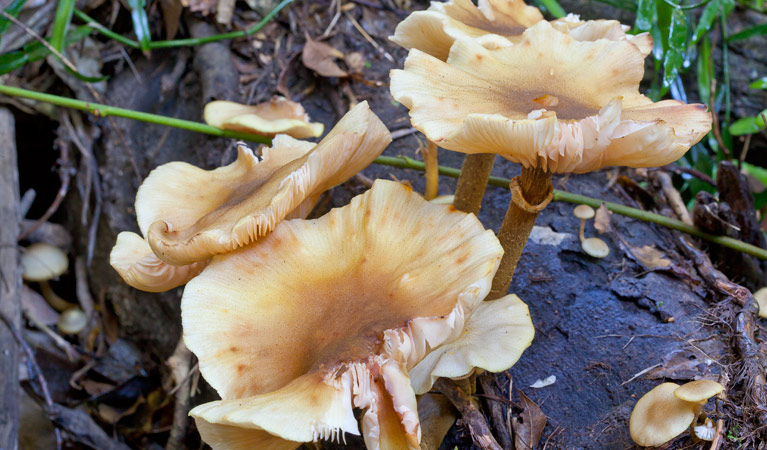Coramba Nature Reserve
Overview
Close to Coramba and Coffs Harbour, at Coramba Nature Reserve you can go walking through protected rainforest along Orara River and go birdwatching.
Read more about Coramba Nature Reserve
Coramba Nature Reserve was created in 1982 to preserve and protect one of the few remaining stands of subtropical lowland rainforest that lies along the Orara River. Today, visitors can walk through this remnant of native vegetation, amongst the towering old-growth trees, under a closed canopy forest that has been successfully brought back to life through a rainforest regeneration project.
Walking along the river, you’ll see a lot of interesting plant life, including white booyong, pepperberry, giant stinging trees and ficus species. In the wetter months, the colours of the funghi are exquisite, with their hues of vivid pink, yellow, white and orange.
There’s no shortage of interesting wildlife here either. You’re likely to hear giant barred frogs on hot summer nights or spot yellow-bellied gliders and long-nosed potoroos any day of the year. There’s also plenty to excite those interested in birdwatching, including wompoo and rose-crowned fruit doves, figbirds, noisy pittas, brown cuckoo doves and white-headed pigeons.
Local alerts
For the latest updates on fires, closures and other alerts in this area, see https://uat.nswparks.cloud/visit-a-park/parks/coramba-nature-reserve/local-alerts
Contact
- in the North Coast region
Coramba Nature Reserve is always open but may have to close at times due to poor weather, particularly flood.
-
-
Coffs Harbour office
02 6652 0900
Contact hours: Monday to Friday, 8.30am to 4.30pm. - 4/32 Edgar St, Coffs Harbour NSW 2450
-
Email: npws.coffscoast@environment.nsw.gov.au
-
Coffs Harbour office
Visitor info
All the practical information you need to know about Coramba Nature Reserve.
Map
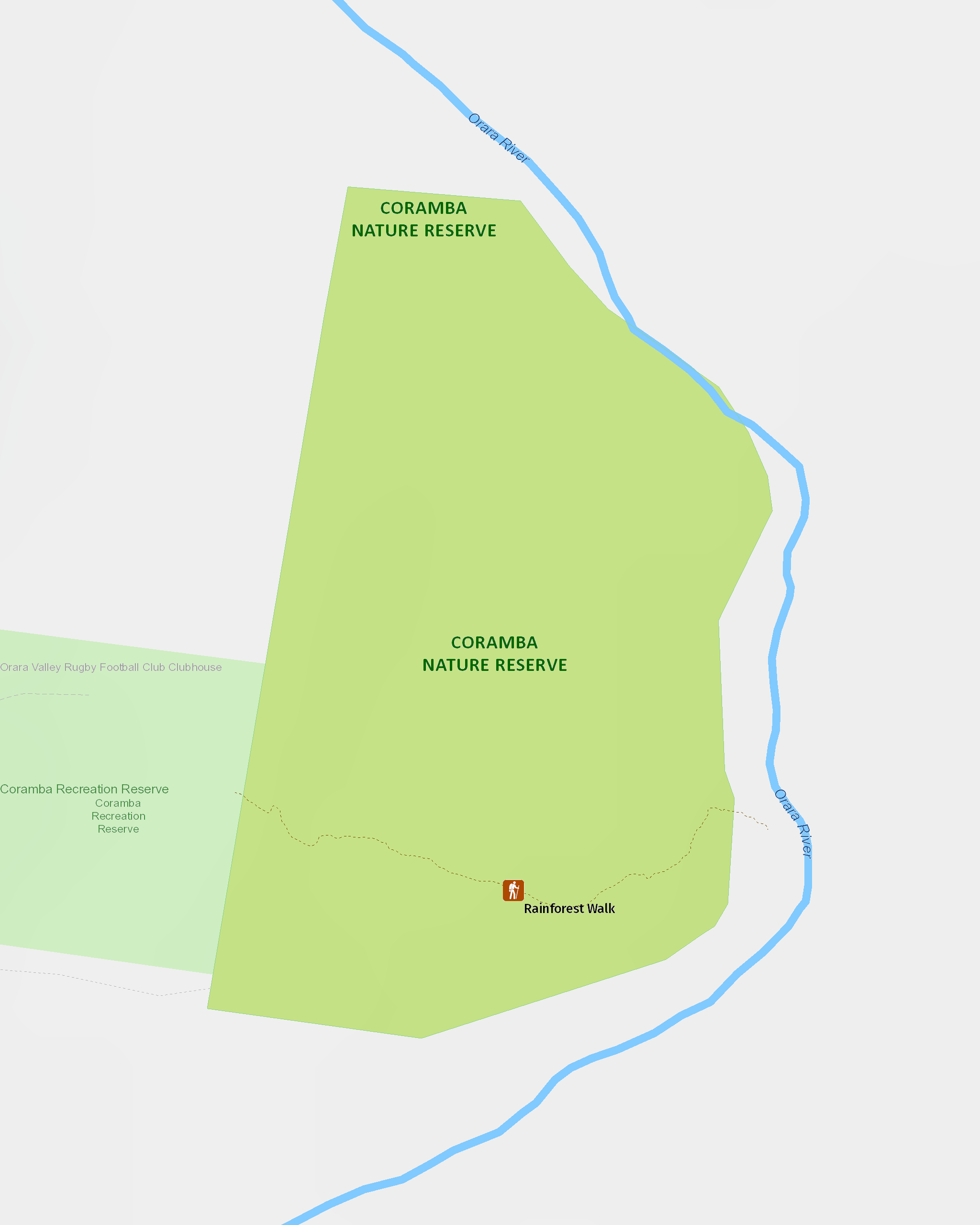
Map legend

Maps and downloads
Nearby towns
Coffs Harbour (19 km)
Coffs Harbour is a coastal city on the North Coast, packed with things to do. It's surrounded by lush forests and national parks.
Woolgoolga (36 km)
Woolgoolga is a busy rural service town with a large Sikh population. It features a coastal setting surrounded by banana farms and forested hills.
Bellingen (52 km)
Bellingen is a laid-back, tree-lined town with a New Age vibe. It's set in a luxuriant valley beside the Bellinger River.
Learn more
Coramba Nature Reserve is a special place. Here are just some of the reasons why:
Protected rainforest
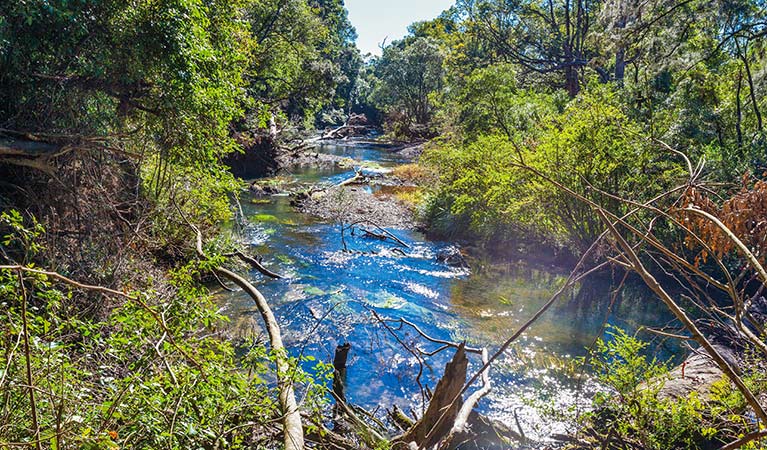
The reserve, though small, is an important ecological community, as it is one of only a very few remaining stands of lowland rainforest along Orara River and is listed as endangered under the Threatened Species Conservation (TSC) Act. A successful rainforest regeneration program has been carried out to protect the reserve's natural resources.
- Rainforest walk Rainforest walk in Coramba Nature Reserve, near Coffs Harbour, is a great place to take a delightful stroll and enjoy birdwatching through a rare protected rainforest.
Interesting wildlife
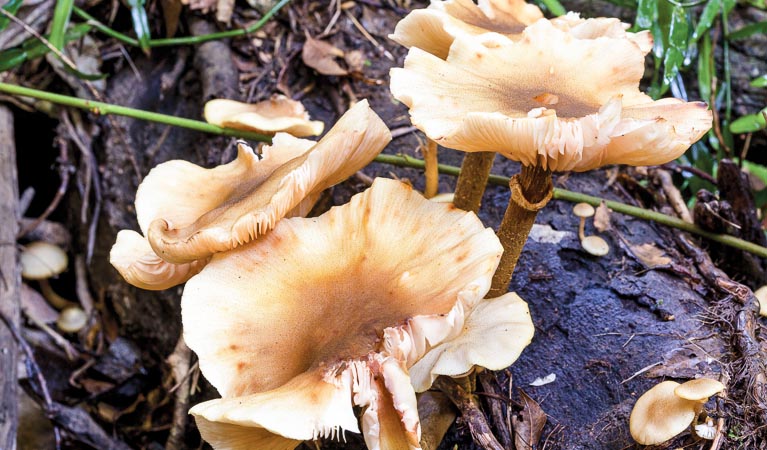
The reserve is the only patch of lowland subtropical rainforest in the Clarence Valley that features white booyong, along with other flood-tolerant species, such as pepperberry, giant stinging tree, and one of the best stands of turnip wood in the area.
- Rainforest walk Rainforest walk in Coramba Nature Reserve, near Coffs Harbour, is a great place to take a delightful stroll and enjoy birdwatching through a rare protected rainforest.
Aboriginal culture
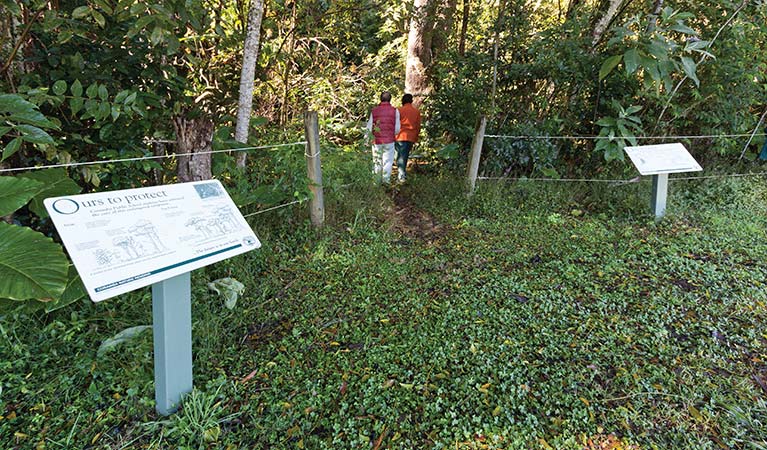
The reserve's name is taken from the name of the nearby town of Coramba, which is in turn derived from the local Aboriginal Gumbaynggirr name for mountain. The land has once served as a fringe dwelling site and meeting place for the Gumbaynggirr people.
Plants and animals protected in this park
Animals
-

Long-nosed bandicoot (Perameles nasuta)
A nocturnal marsupial and one of the smaller Australian native animals, the long-nosed bandicoot is found across eastern Australia. Populations in the Sydney region have dwindled since European settlement, leaving only endangered colonies in inner western Sydney and at North Head, near Manly. The long-nosed bandicoot has grey-brown fur and a pointed snout which it uses to forage for worms and insects.
-

Grey-headed flying-fox (Pteropus poliocephalus)
The grey-headed flying fox is Australia's largest native bat, with a wingspan up to 1m. This threatened species travels up and down south-eastern Australia and plays a vital role in pollinating plants and spreading seeds in our native forests.
Education resources (1)
What we're doing
Coramba Nature Reserve has management strategies in place to protect and conserve the values of this park. View the detailed park and fire management documents.

